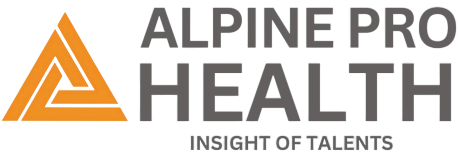A Pediatric Virtual Assistant (PVA) is a remote, trained support professional with expertise in child-focused healthcare operations. Unlike generic virtual healthcare assistants, PVAs are tailored to the unique needs of pediatric clinics. They manage well-child visits, growth chart tracking, vaccine scheduling, and routine parental questions.
Integrated with your EMR, communication tools, and billing system, a PVA functions like a dedicated back-office employee—responding to calls, chats, or texts. This digital teammate handles non-visit tasks and administrative operations, enabling front-line staff to focus more on direct patient care.
Top 10 Benefits of Pediatric Virtual Assistants
1. Reducing No-Shows & Optimized Scheduling
PVAs streamline scheduling by managing appointment slots, sending reminders, and filling cancellations via waitlists. Clinics report 30–40% fewer missed appointments due to proactive notifications and 24/7 coordination—reducing workflow disruptions and improving patient access.
2. Time Savings & Administrative Relief
Audits show a 40–60% reduction in administrative workload with PVAs. They manage data entry, form preparation, prior authorizations, billing follow-up, and meeting minutes freeing up staff and eliminating after-hours paperwork.
3. Better Parent Communication
Parents expect quick, accurate responses. PVAs triage inquiries, provide clinic-approved guidance, and escalate urgent issues. They also send follow-ups with age-specific content (e.g., asthma or immunization reminders), improving engagement and outcomes. Secure systems build parent confidence.
4. EMR Updates & Vaccination Tracking
Virtual Medical Assistants maintain clean, current records by entering demographics, lab results, and growth metrics, and updating immunization charts. They also audit data for duplicates or missing elements to support compliance.
5. Insurance/Billing Support
PVAs manage insurance verification, claims submission, and denial follow-ups. They handle pre-authorizations, eligibility checks, and patient statements reducing claim denials, accelerating reimbursements, and sustaining cash flow. One clinic reduced rejections by 25% and increased revenue by 12%.
6. Telehealth Readiness & Continuity of Care
PVAs support virtual consultations by helping families connect, sending prep instructions, and ensuring post-consultation follow-ups. Especially in the post-pandemic era, they reduce tech-related friction and support patient retention.
7. Personalization & Chronic Care Support
PVAs tailor outreach for chronic or developmental care sending therapy reminders, tracking asthma check-ins, and managing behavioral health follow-ups. They adapt communications by language and culture, connecting families to the right care.
8. Data Insights for Operational Strategy
By logging call reasons, queries, and billing trends, PVAs provide actionable analytics. For example, frequent fever-related calls in the afternoon could inspire new workflows. Insights help reduce bottlenecks and improve satisfaction.
9. Cost-Effective and Scalable
Compared to hiring full-time staff, PVAs cut costs—no extra office space, equipment, or benefits required. Services can scale up during flu season and scale down in slower months. Most practices see ROI within weeks.
10. Enhanced Patient Satisfaction & Trust
With smooth workflows and empathetic communication, practices see a 10–15% boost in patient satisfaction and positive word-of-mouth. Families feel valued when their questions are answered promptly and personally.
Table of Contents
- Challenges & Implementation Tips
- A Day with a Pediatric Virtual Assistant
- Choosing the Right Pediatric Virtual Assistant
- Why Choose Practolytics?
- Conclusion
Challenges & Implementation Tips
While powerful, PVAs require thoughtful implementation:
- Training: Educate staff on how to collaborate with virtual teammates.
- Security: Use HIPAA-compliant platforms with encryption, role-based access, and logging.
- Workflow Design: Define escalation rules—what goes to clinicians vs. what stays automated.
- Change Management: Ensure smooth adoption with clear protocols and team buy-in.
A Day with a Pediatric Virtual Assista
08:00 – Reminder texts sent; two families reschedule via link
10:00 – EMR flags missing immunization data; PVA updates chart
13:00 – Parent inquires about a rash; PVA sends instructions and logs it for nurse review
15:00 – Billing team notified of a denied claim; PVA begins resubmission
19:00 – Parent messages about a fever; PVA triages and escalates per protocol
Next Morning – Practice manager reviews dashboard and initiates vaccine outreach based on trend data
Behind the scenes, your clinic delivers compassionate, efficient care—without the administrative overload.
Choosing the Right Pediatric Virtual Assistant
Look for a PVA partner who offers:
- Deep understanding of pediatric workflows and parental expectations
- Seamless integration with EHR and billing platforms to avoid double data entry
- HIPAA-certified, secure systems with encryption, audit trails, and role-based control
- Custom scripting and triage workflows tailored to your clinic
- Scalability by time or function to match your needs
- Analytics dashboards for continuous improvement
- Reliable onboarding and ongoing support for your team
Why Choose Practolytics?
Practolytics designs Pediatric Virtual Assistants with real-world feedback from pediatricians and clinic managers. Our solutions ensure:
- Intuitive workflows
- Empathetic, brand-aligned communication
- Seamless HIPAA-compliant integrations
- Built-in reporting tools
- Scalable support for single practices or large networks
Next Steps
- Identify pain points – Are you struggling with no-shows, billing delays, or after-hours calls?
- Start small – Pilot appointment reminders or billing support features.
- Train your team – A few onboarding sessions can make a big difference.
- Monitor metrics – Track no-show rates, billing turnaround, and satisfaction scores.
- Scale up – Add features like EMR maintenance, telehealth prep, and chronic care coordination.
Conclusion
A Pediatric Virtual Assistant isn’t just a cost-saver it’s an empathetic, efficient extension of your care team. Clinics using PVAs experience:
- Fewer no-shows
- Reduced administrative burden
- Faster billing cycles
- Happier, more engaged families
With secure, scalable, and child-focused support, PVAs from Practolytics help your clinic thrive one family at a time.




